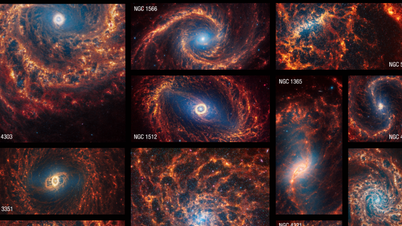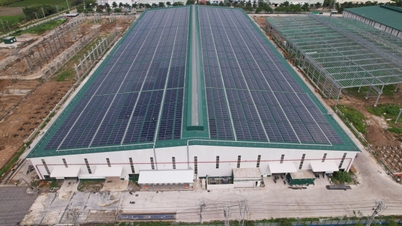Earlier this year, a team of German scientists discovered an unusual peak of the radioactive isotope beryllium-10 on the seabed of the Pacific Ocean.
This type of isotope forms when cosmic rays collide with the Earth's atmosphere, then fall into the oceans, deposit, and adhere to the Earth's crust.
Typically, these "beryllium-10 rains" occur fairly regularly globally, so their traces in the rock layers should be relatively uniform.
However, a study in the journal Astronomy & Astrophysics found a spike in concentration, dating back approximately 10 million years.
Scientists believe that a star near Earth exploded as a supernova at that time.
To verify this, another research team studied the hypothesis by observing the stars.
They used data from the European Space Agency's (ESA) Gaia survey project to track the orbits of the Sun and 2,725 nearby star clusters over the past 20 million years, to calculate the probability of supernovae occurring in those clusters.

Peaks of beryllium-10 were discovered in the ferromanganese crust at the bottom of the Pacific Ocean , formed between 9 and 12 million years ago (Image: Nature Communications).
The results suggest there is approximately a 68% chance that a star exploded within 326 light-years of the Sun, within 1 million years of the beryllium-10 peak appearing.
The team also identified 19 star clusters with a probability of over 1% of supernovae occurring at this distance, coinciding with the timing of the anomaly.
Notably, the study also ruled out direct, life-threatening radiation effects.
The estimated distance suggests that even a relatively strong Type II supernova would primarily affect atmospheric chemistry rather than global ecosystems.
However, if the beryllium-10 peaks only appear in a few areas of the Pacific Ocean, the cause could be a change in ocean currents, leading to localized concentrations of the radioactive material.
Conversely, if the origin were cosmic, a similar increase should be detected across oceans of the same age.
Scientists say that sampling and analyzing sediment from various areas will help shed light on this mystery.
Further sampling from seabed repositories around the world will be essential to determine whether this anomaly is a localized Pacific signal or a truly global event.
If confirmed, it would be the oldest isotopic evidence of the impact of a nearby supernova on Earth's atmosphere.
Source: https://dantri.com.vn/khoa-hoc/dau-vet-duoi-day-bien-he-lo-vu-no-sao-gan-trai-dat-hang-trieu-nam-truoc-20251012235259991.htm



![[Image] Vietnam's colorful journey of innovation](/_next/image?url=https%3A%2F%2Fvphoto.vietnam.vn%2Fthumb%2F1200x675%2Fvietnam%2Fresource%2FIMAGE%2F2025%2F12%2F14%2F1765703036409_image-1.jpeg&w=3840&q=75)






























































![[Image] Vietnam's colorful journey of innovation](https://vphoto.vietnam.vn/thumb/402x226/vietnam/resource/IMAGE/2025/12/14/1765703036409_image-1.jpeg)





































Comment (0)